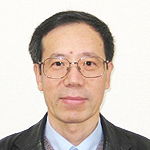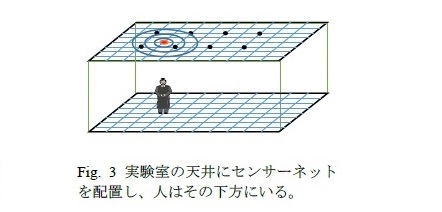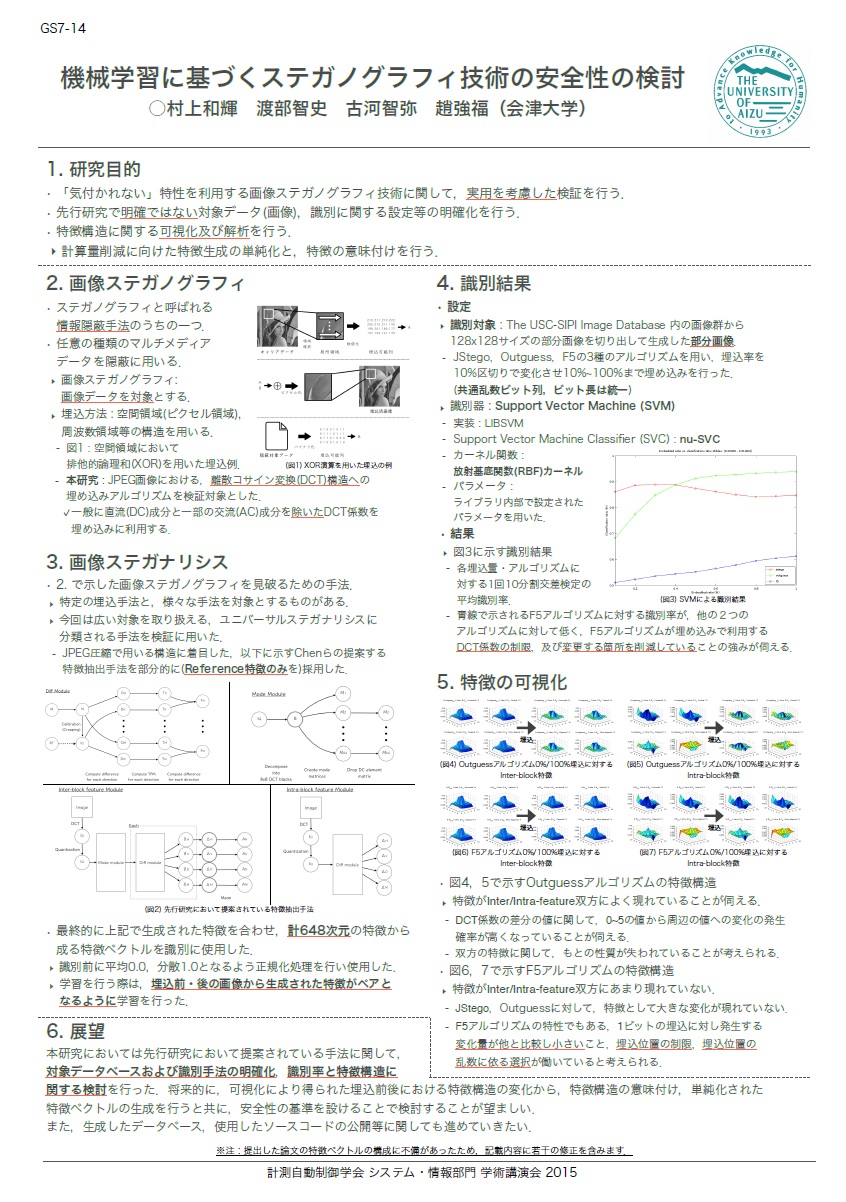
ZHAO Qiangfu
Professor
- Affiliation
- Department of Computer Science and Engineering/Division of Computer Science
- Title
- Professor
- qf-zhao@u-aizu.ac.jp
- Web site
- http://www.u-aizu.ac.jp/~qf-zhao/
Education
- Courses - Undergraduate
- Artificial Intelligence; Algorithms and Data Structures
- Courses - Graduate
- Introduction to Meta-heuristicsNeural; Machine Learning
Research
- Specialization
-
Mathematical informatics
Intelligent informatics
Machine learning
- Educational Background, Biography
- Professor of the University of Aizu (U-Aizu) from 1999 to present; associate professor of U-Aizu from 1995 to 1999, associate professor of Tohoku University from 1993 to 1995, associate professor of Beijing Institute of Technology (BIT) from 1991 to 1993, and post-doctoral fellow at BIT from 1988 to 1991.
- Current Research Theme
- Machine learning based automatic morphing; induction of compact and high performance awareness agents; steganography and steganalysis; user authentication; brain modeling and awareness science.
- Key Topic
- Morphing, learning, modeling, understanding, steganography, steganalysis, awareness.
- Affiliated Academic Society
- IEEE SMCS, IEEE CIS, IEEE CS, IEICE, IPSJ, SICE, INNS, JNNS, SOFT.
Others
- Hobbies
- Chinese flute, swimming
- School days' Dream
- To become a hero
- Current Dream
- To understand the brain
- Motto
- There is a will, there is a way.
- Favorite Books
- Bible
- Messages for Students
- Be confident, because you are the son/daughter of the all mighty God.
Main research
- Experimental and theoretical study on infrared sensor arrays for activity recognition
-
Human detection sensor (or infrared sensor) can detect the existence of human based on the fact that a human body is actually a "heat source". In this research, we arrange several sensors in the form of a matrix (see the main image), and try to propose theories and technologies for detecting not only the existence, but also the positions and the activity patterns of some person in a certain region. Sub-image 1 shows the region covered by a sensor array with 7 sensors. Through this project, students are expected to learn basics related construction of wireless sensor network, data analysis, and pattern recognition. All these should be helpful for the students to find a good job in some IT companies.
- Steganography and steganalysis based on machine learning
-
Steganography is a technology for information hiding. Combining stenography and cryptography together, it is possible to improve the information security. The purpose of this study is to investigate which steganography technique is good, and how much information we can embed to a given medium, to ensure the security. For this purpose, we use methods developed in machine learning, and try to recognition the natural media and those embedded with some information. Results obtained will be important for us to propose new and better steganography techniques. By joining this project, the students can learn technologies related to image processing, image recognition, pattern recognition, cryptography and steganography. We believe that these technologies are useful for the students in their feature work.
Dissertation and Published Works
・ Y. Kaneda and Q. F. Zhao, "Inducing high performance and compact neural networks based on decision boundary making," IEEJ Trans.-C, Vol. 134, No. 9, 2014.
・ J. Ji, P. Scholten, and Q. F. Zhao, "Support to self-diagnosis with awareness," International Journal of Machine Learning and Cybernetics (Springer), 2013.
・ J. Ji and Q. F. Zhao, "A Hybrid SVM Based on Nearest Neighbor Rule," International Journal of Wavelets, Multi-resolution and Information Processing, World Scientific Publishing Company, Vol. 11, No. 6, 2013.
・ Q. F. Zhao and C.-H. Hsieh, "Card User Awareness Based on Image Morphing," Journal of Computer Engineering and Science, Vol. 34, No. 1, pp. 11-20, 2012.
・ H. Hayashi and Q. F. Zhao, "Inducing compact NNTrees through discriminant multiple centroids based dimensionality reduction," International Journal of Innovative computing, Information and Control, Vol. 7, No. 5, 2011.
・ J. Ji, Y. T. Tony, and Q. F. Zhao, "Clustering large sparse text data: a comparative advantage approach," Journal of Information Processing Society of Japan, Vol. 18, No. 9, pp. 1234-1243, 2010.
・ H. Hayashi and Q. F. Zhao, "A fast algorithm for inducing neural network trees," Journal of Information Processing, Vol. 49, No. 8, pp. 2878-2889, 2008.
・ C. F. Lv and Q. F. Zhao, "k-PCA: a semi-universal encoder for image compression," International Journal of Pervasive Computing and Communications, Vol. 3, No. 2, pp. 205-220, 2007.
・ Hazem M. El-Bakry, and Q. F. Zhao, "Fast Normalized Neural Processors For Pattern Detection Based on Cross Correlation Implemented in the Frequency Domain," Journal of Research and Practice in Information Technology, Vol. 38, No.2, pp. 151-170, 2006.
・ Q. F. Zhao, "Inducing NNC-Trees with the R4-rule," IEEE Trans. on Systems, Man, and Cybernetics - Part B: Cybernetics, Vol. 36, No. 3, pp. 520-533, 2006.




